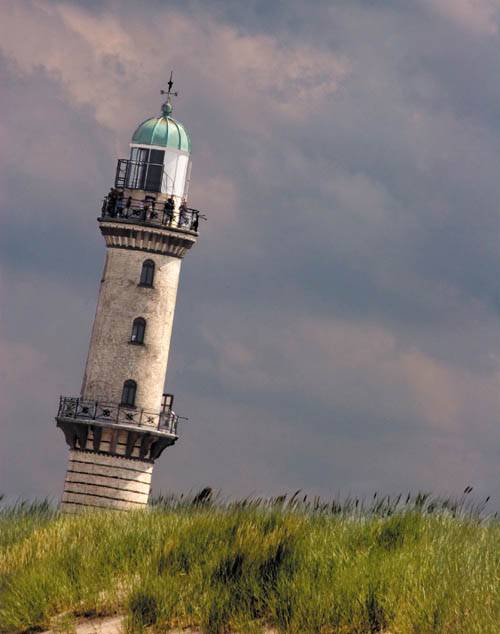Chapter 2. What Is Raw?
| Lighthouse, Warnemunde, Germany. 1/400 s at f/7.1. Canon EOS 20D with Canon 75-300mm EF lens.
Before we proceed to revel in the extremely digital realm of raw photography, let's take a moment to consider one facet of that quaint nineteenth-century technology called film. Arguing the merits of film versus digital is a little silly, as they both have strengths and weaknesses. Though I may sometimes sound like a digital chauvinist, there are times when I actually miss working with film (these times don't last very long and so are probably not apparent to an outside observer). One of the most impressive things about film technology is that a piece of filmeven one made 150 years agois both a recording mechanism and a storage technology. In fact, a frame of film is such a spectacularly self-contained imaging device that you don't even need to put it inside a camera to use it. Stick it in any old box with a pinhole in one side, and you can start creating photorealistic images. No matter what kind of film camera you have, you can drastically change its imaging characteristics and storage capacity simply by switching to a different type of film. Digital imaging technology is not so remarkably self-contained. First, you need a digital image sensor, which is a special type of computer chip. Unlike film, the image sensor needs a power supply to be able to capture an image, and it needs a place to store the image data. These days, the storage mechanism is usually a flash memory card of some kind. A digital camera also needs lots of other components, from memory buffers that facilitate fast shooting, to controller chips and special circuits for moving the image data between components, to an LCD and interface for configuring the camera's imaging parameters. However, like film, a digital image sensor does not capture image data that can be immediately viewed as a picture. Just as film must be developed to render a visible image, digital image data must be processed by a computer to yield a final image. When you shoot in JPEG mode, your camera uses its built-in, on-board computer to perform this processing step. When you shoot raw, this processing is performed by your PC or Mac. |
EAN: 2147483647
Pages: 76
